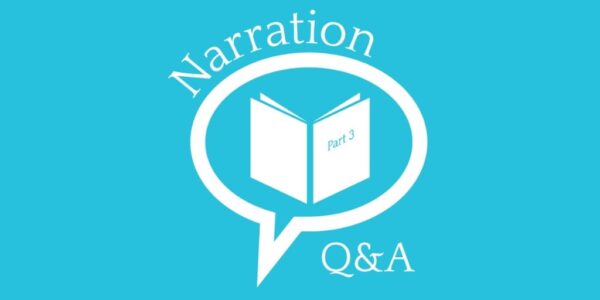60-day returns • free shipping on USA orders $129+


How well do you know The Pledge of Allegiance? I’m pretty sure most of us can recite it. Want to try? (Those of you residing in a country other than the United States, bear with me while I make a point.)
But how well do you know The Pledge of Allegiance? Try putting it in your own words.
No, don’t just keep reading here. Stop and try to put The Pledge in your own words. Go ahead. I’ll wait.
Did you do it? Now, here’s the $10,000 question: Which of those exercises displayed true knowledge?
Trying to put something in your own words requires much more of the mind and heart to be engaged. It is a higher-level thinking process than memorization and recitation. It requires you to interact with the ideas, process them, and understand them for yourself.
That’s narration.
What is Narration?
We’re in the beginning weeks of a series on Narration Q & A. Last week we looked at the reason Charlotte Mason encouraged us to use the method of narration. Today the question is
Narration Question #2: What is narration exactly?
The short answer is that narration is retelling something in your own words.
It’s interesting that we all turn to this technique quite naturally when we want to make sure we understand. We’ll listen to someone who is telling us something, then we’ll reply, “So what you’re saying is . . . ,” and we’ll restate their message in our own words. It’s a common tool to assure comprehension.
When we use narration—retelling something in your own words—for schoolwork, we are harnessing this powerful, yet natural, tool and teaching our children to use it intentionally to self-educate.
Which brings us to the next question.
Narration Question #3: How can I get my child to stop narrating word for word/parroting passages? How can I encourage her to put it into her own words?
You might try asking her to draw a picture of the story, then explain her picture to you. She might act out the story. You could ask her to think of five questions covering the story and tell you the questions. (She has to know what was in the story to come up with the questions.) She could build her favorite part with interlocking blocks, then tell you about what she built.
Each of these variations will encourage your child to make the material her own, process it and deal with it for herself, before she starts to talk.
You’ll find a list of about 55 other narration variation ideas on our website, along with a handy bookmark that you can download to keep narration suggestions right at your fingertips.

This is a much needed message for today! I’m so thankful that Sonya has shared so honestly about the preciousness of our time together as a family! Thank you so much! Blessings!
The variations you link to should help parents understand how to use the method of narration in a broader sense.
As you brought out, narration is an “exercise” in the art of knowing. And some of these fifty-five variations would provide excellent exercises for the high school student. Similar variations suggested themselves to me in our high school years so I couldn’t resist commenting and hopefully encouraging those whose minds are on high school.
Karen, I love the list of narration requests you give on pages 126 and 127 of A Charlotte Mason Companion.